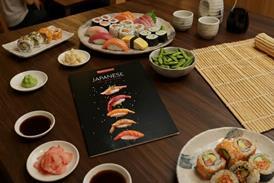A host of colourings could be banned from use in food products, leaving manufacturers struggling to find alternatives.
The European Food Safety Authority has launched an investigation to re-evaluate the safety of all authorised food additives, with colours the first ingredients under review.
The study, which is expected to be completed next year, could lead to any colour found unsafe being withdrawn, said EFSA.
The authority has called for the industry to supply data on food colours as part of the re-evaluation.
Among the colours under review are the infamous tartrazine (E102), brilliant blue FCF (E110) and sunset yellow (E133), which some experts have linked to hyperactivity in children, asthma, migraines and certain rashes. Also in the spotlight is cochineal (E120), a red dye obtained by crushing beetles.
The outcome of the survey is being anxiously awaited by manufacturers. The difficulty such a ban could pose is illustrated by the decision by Nestlé to axe blue Smarties last June, following a move to all-natural additives for the product. The company was
unable to find a natural alternative to the artificial brilliant blue.
"If there was a ban on any colours being used in products, then there could be serious cost implications for the industry in implementing it, although we hope it wouldn't go as far as actual products being withdrawn," said a source within the Food and Drink Federation.
"We will be working at European level to establish a workable mechanism for the collection of relevant data in support of the continued use of current food additive applications."
The Food Standards Agency confirmed the European Commission could "delete" any colours considered unsafe by EFSA.
A three-year survey of the impact on children of additives such as sunset yellow and tartrazine had shown that children tested were better behaved when the substances were removed from their diet, said an FSA spokeswoman.
But independent experts stated this evidence was not conclusive, she said, adding: "The agency is considering how to take forward further research in this area."
The European Food Safety Authority has launched an investigation to re-evaluate the safety of all authorised food additives, with colours the first ingredients under review.
The study, which is expected to be completed next year, could lead to any colour found unsafe being withdrawn, said EFSA.
The authority has called for the industry to supply data on food colours as part of the re-evaluation.
Among the colours under review are the infamous tartrazine (E102), brilliant blue FCF (E110) and sunset yellow (E133), which some experts have linked to hyperactivity in children, asthma, migraines and certain rashes. Also in the spotlight is cochineal (E120), a red dye obtained by crushing beetles.
The outcome of the survey is being anxiously awaited by manufacturers. The difficulty such a ban could pose is illustrated by the decision by Nestlé to axe blue Smarties last June, following a move to all-natural additives for the product. The company was
unable to find a natural alternative to the artificial brilliant blue.
"If there was a ban on any colours being used in products, then there could be serious cost implications for the industry in implementing it, although we hope it wouldn't go as far as actual products being withdrawn," said a source within the Food and Drink Federation.
"We will be working at European level to establish a workable mechanism for the collection of relevant data in support of the continued use of current food additive applications."
The Food Standards Agency confirmed the European Commission could "delete" any colours considered unsafe by EFSA.
A three-year survey of the impact on children of additives such as sunset yellow and tartrazine had shown that children tested were better behaved when the substances were removed from their diet, said an FSA spokeswoman.
But independent experts stated this evidence was not conclusive, she said, adding: "The agency is considering how to take forward further research in this area."















No comments yet